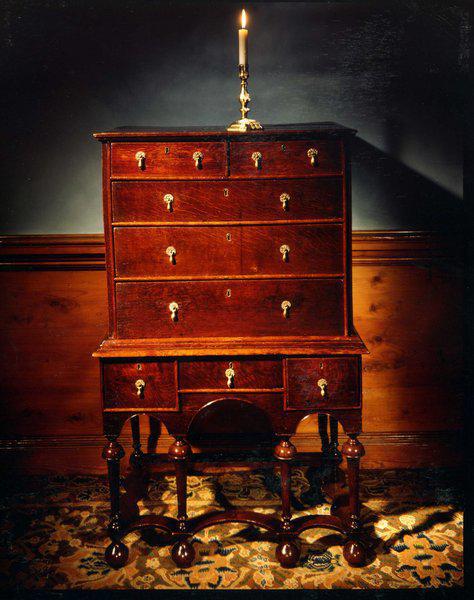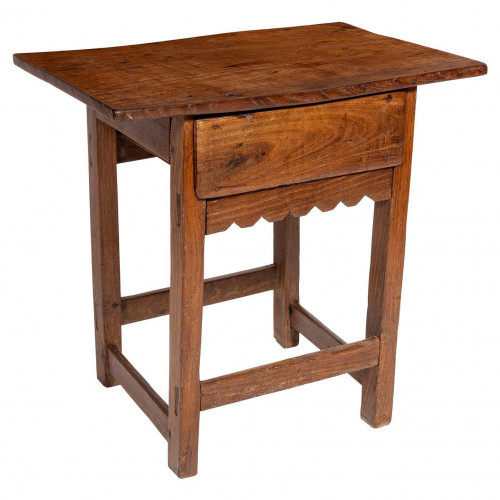An important, late-17th century, oak child's chest-on-stand
10393
In two parts. The plank top with a moulded edge and minor repairs. The top with two short drawers above three long drawers, faced with single-bead mouldings, with original escutcheons and replaced locks and handles, with a lower moulded edge. The base with a moulded edge and three short drawers, faced with a single-bead moulding, and a shaped apron with an old repair below. Standing on turned legs, four at the front and two at the back, with mushroom cappings and joined by shaped stretchers. The carcass pine, and the drawers lined in pine. Excellent original colour and patination. English, last quarter of the 17th century.
This is an important piece of William & Mary oak furniture since there is no other, known, example of a surviving child's chest-on-stand. The cabinet-maker used a superior sense of proportion when constructing this piece, which is quite exceptional. The petite size is in harmony with the simplicity of the design, and the gentle curves of the stand are in unity with the linear top.
In addition to this, the original colour and patination is outstanding, as is the condition of the piece.
It is known, and documented in a few 17th century paintings, that fine pieces of furniture were made specifically for children of substantial households. Very few such pieces survive today, probably due to their limited supply, delicacy and heavy utalitarian nature. References to chest of drawers in inventories and correspondence of the 17th century are comparatively rare, and chests of drawers mounted on stands with spiral, twisted or turned baluster supports were made towards the end of the century. By this time, the gain from a practical standpoint of elevating the lower drawers from the ground had been recognised and, as in this piece, stands were inspired by continental fashions. This piece also illustrates the transition from mid-17th century geometrical mouldings and applied balusters to simplicity of design which became predominant in the early-18th century. The drawers are divided by single bead mouldings, with a cock-bead worked in the lower section of the stand frieze, both of which were to become standard features of early-18th century cabinet furniture.
17th Century
1675
Oak
England











